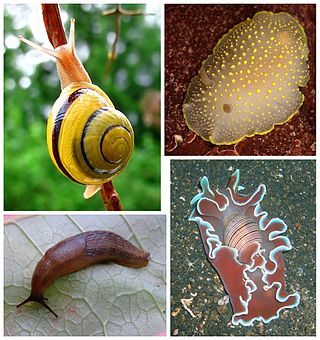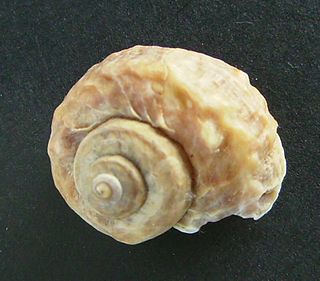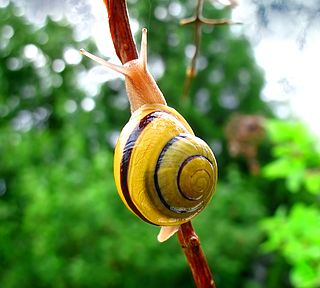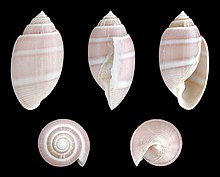
Opisthobranchs is a now informal name for a large and diverse group of specialized complex gastropods which used to be united in the subclass Opisthobranchia. That taxon is no longer considered to represent a monophyletic grouping.

Heterobranchia, the heterobranchs, is a taxonomic clade of snails and slugs, which includes marine, aquatic and terrestrial gastropod mollusks.

The order Cephalaspidea, also known as the headshield slugs and bubble snails, is a major taxon of sea slugs and bubble snails, marine gastropod mollusks within the larger clade Euopisthobranchia. Bubble shells is another common name for these families of marine gastropods, some of which have thin bubble-like shells. This clade contains more than 600 species.

The Aplustridae is a taxonomic family of sea snails or bubble snails, marine gastropod mollusks in the superfamily Acteonoidea.

Stylommatophora is an order of air-breathing land snails and slugs, terrestrial pulmonate gastropod molluscs. This taxon includes most land snails and slugs. Stylommatophorans lack an operculum, but some close their shell apertures with temporary "operculum" (epiphragm) made of calcified mucus. They have two pairs of retractile tentacles, the upper pair of which bears eyes on the tentacle tips. All stylommatophorans are hermaphrodites.

Amphibolidae is a family of air-breathing snails with opercula, terrestrial pulmonate gastropod molluscs.

Pyramidelloidea is a superfamily of mostly very small sea snails, marine gastropod mollusks and micromollusks within the clade Panpulmonata.

Amphiboloidea is a taxonomic superfamily of air-breathing land snails.

Euthyneura is a taxonomic infraclass of snails and slugs, which includes species exclusively from marine, aquatic and terrestrial gastropod mollusks in the clade Heterobranchia.

Lower Heterobranchia, also known as the Allogastropoda, is a group of rather specialized, highly evolved sea slugs and sea snails, within the subclass Heterobranchia.

Nudipleura are a clade of sea snails and sea slugs, marine gastropod mollusks within the large clade Heterobranchia.

Acochlidiacea, common name acochlidians, are a taxonomic clade of very unusual sea snails and sea and freshwater slugs, aquatic gastropod mollusks within the large clade Heterobranchia. Acochlidia is a variant spelling.

Umbraculoidea is a superfamily of unusual false limpets with a thin soft patelliform shell, marine gastropod molluscs in the clade Umbraculida, within the clade Euopisthobranchia.
Runcinoidea is a taxonomic superfamily or a clade Runcinaecea of sea slugs, marine gastropod mollusks in the order Runcinida

Rhodopidae is a taxonomic family of sea snails, marine opisthobranch gastropod mollusks in the superfamily Murchisonelloidea.

Hygrophila is a taxonomic superorder of air-breathing freshwater snails, aquatic pulmonate gastropod mollusks within the clade Panpulmonata.
This overview lists proposed changes in the taxonomy of gastropods at the family level and above since 2005, when the taxonomy of the Gastropoda by Bouchet & Rocroi (2005) was published. In other words, these are recent updates in the way various groups of snails and slugs are classified.

Panpulmonata is a taxonomic clade of snails and slugs in the clade Heterobranchia within the clade Euthyneura.
Euopisthobranchia is a taxonomic clade of snails and slugs in the clade Heterobranchia within the clade Euthyneura.
Architectibranchia is a clade of marine snails, gastropod molluscs.






















